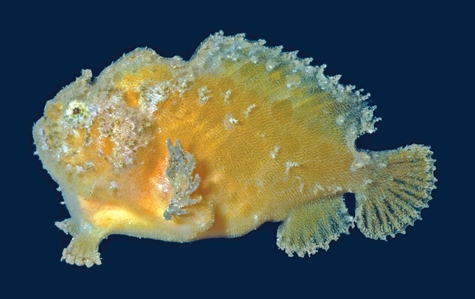General Description
Body short, deep, tailbase short; illicium or 'fishing rod' without a distinct lure; body and fins densely covered in tiny divided spinules of equal length. Pale yellow to orange-brown often with many small ocelli, underside of head pale; irregular light greyish patches on head, above pectoral-fin base, at origin of dorsal fin, and on tail base; outer margins of fins greyish-white, sometimes with purplish-brown or pale brown borders. To 8 cm.
Biology
Anglerfishes are well-camouflaged ambush predators with their skin variously covered in spinules, filaments and other appendages to aid their camouflage.
Habitat
Rocky reefs in association with sponges, in depths of 10-20 m.
Reefs
Sponge gardens
Distribution guide
Southern Australia.
Species Group
Depth
Water Column
Max Size
8 cm
Diet
Carnivore
Commercial Species
No
Global Dispersal
Native to Australia
Conservation Status
- DSE Advisory List : Not listed
- EPBC Act 1999 : Not listed
- IUCN Red List : Not listed





